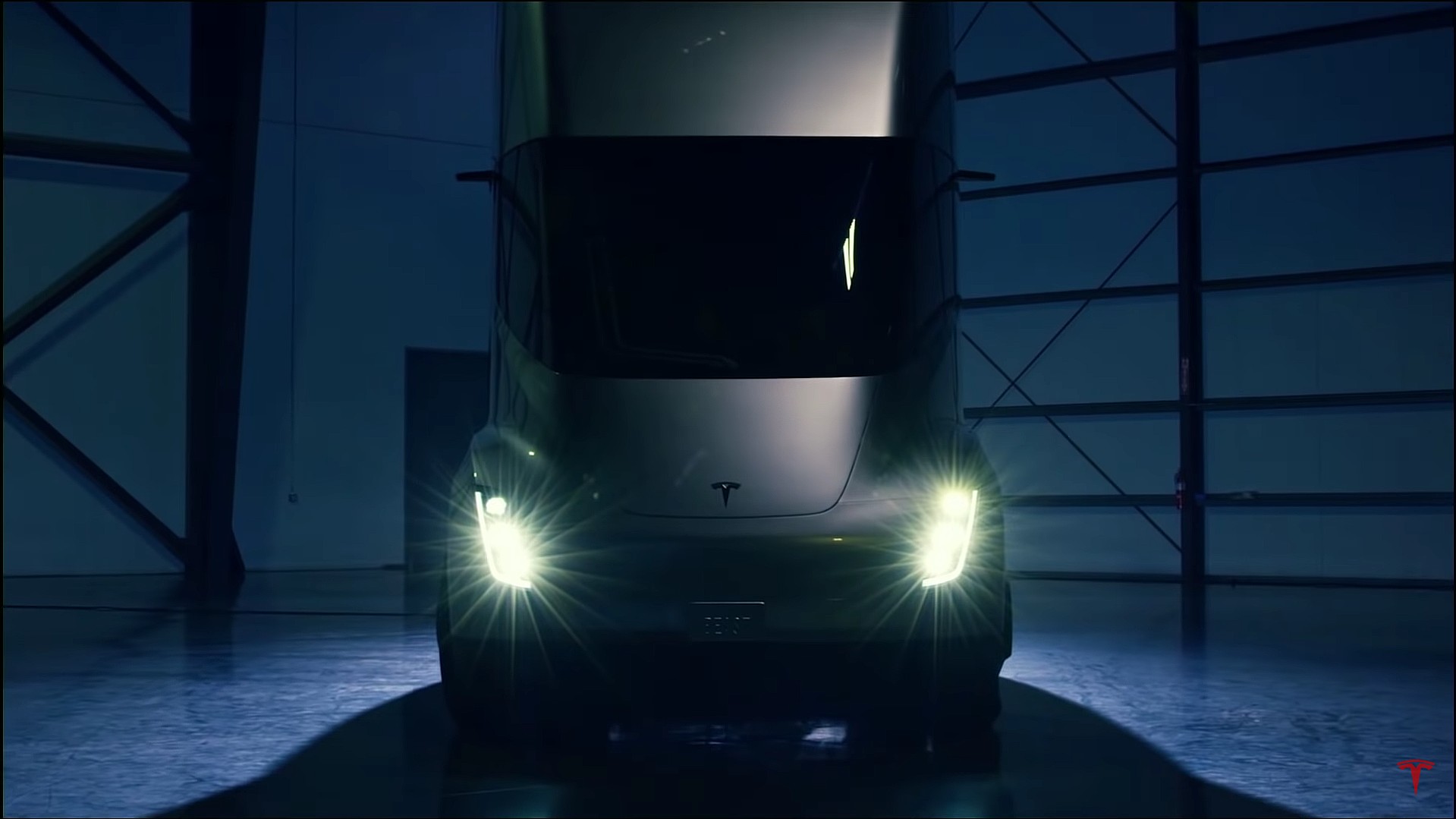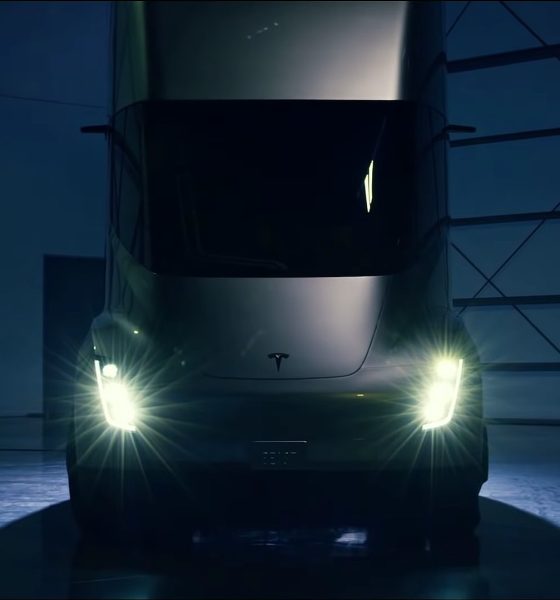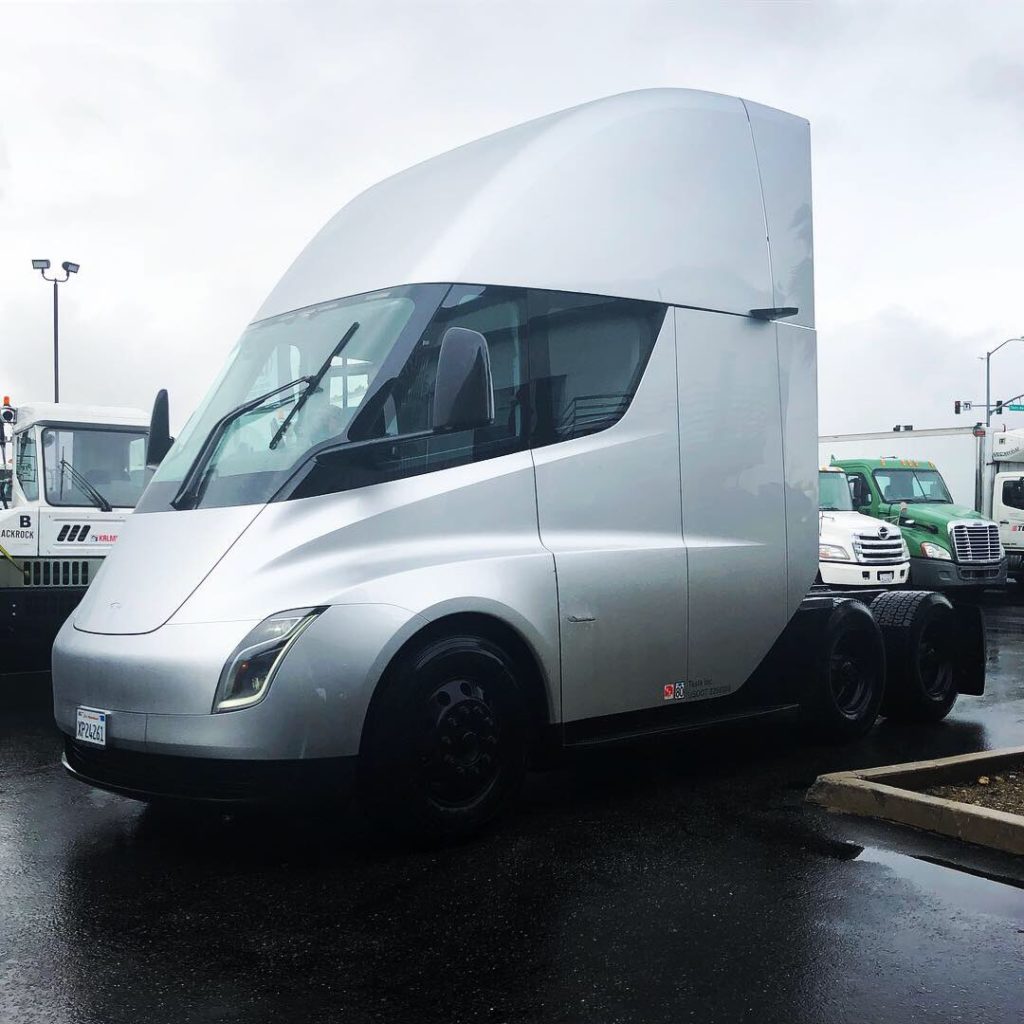

News
Tesla Semi could save lives if used as a military vehicle
The Tesla Semi features several benefits over traditional petrol-powered trucks. It’s faster, quieter, more powerful, and it’s far cheaper to operate. These characteristics give the Semi the potential to change the long-haul industry. But as it turns out, the Semi has the potential to revolutionize the military’s logistics as well, and it will likely save a lot of lives in the process.
As noted in a Breaking Defense report, access to gas during times of conflict comes at a terrible cost. In Afghanistan and Iraq, for example, hundreds of American troops have been slain and thousands more have been wounded over the years while moving supplies. Fuel, which is usually transported through large convoys of trucks, just happens to be very easy targets, and they do tend to get attacked.
Lt. Gen. Eric Wesley, the head of the US Army’s Futures & Concepts Center, noted that the military’s logistics burden gets drastically reduced once the need for gas sees a dramatic reduction. If the military stops employing long convoys of oil trucks during times of conflict, hundreds of lives could quite literally be saved. One way to accomplish this, of course, is through the use of electric trucks, such as the Tesla Semi.

Electric vehicles already present several advantages compared to petrol-powered machines. They’re inherently quiet, making them very difficult to detect. They’re easy to maintain as well, since they have relatively few parts compared to an internal combustion-powered vehicle. EVs can even stay off the grid for extended periods, provided that they are provided a setup that allows them to charge, such as solar panels and a battery storage unit.
“Battery costs have gone down precipitously over the last ten years. Recharge times have dropped, and ranges has grown longer. The trajectory that all of that is on, in the next two years, it’ll be far more efficient to have an electric vehicle than internal combustion, so we’re already, I would argue, late to the need,” he said.
Apart from not needing any gas, electric vehicles like the Semi can also generate power for high-tech combat systems such as sensors, command networks, and even some advanced weaponry. A Tesla Semi outfitted for the army could even be equipped with some batteries to serve as a charging station for other electric army vehicles. Granted, Wesley noted that batteries today may not be energy-dense enough to power heavy equipment like tanks yet, but for light tactical vehicles, EVs are already a good fit for the army’s needs.

Of course, there are still several challenges that need to be addressed before electric vehicles can be deployed for the military. The costs of transitioning the military’s current fleet to EVs is also substantial, and other issues such as charging infrastructure must be ironed out. The supply chains for electric army vehicles must also be secured. Yet considering that an all-electric transportation sector is all but assured today, addressing such challenges may very well be a priority.
The Lt. General’s team is currently producing a white paper that will explore the idea of electric military machines. The study will be submitted to the four-star chief of Army Futures Command, Gen. John “Mike” Murray. For Lt. General Wesley, transitioning the army to EVs may very well be a pertinent goal, considering that the age of the internal combustion engine may be ending.
“Tesla is building large [semitrailer] trucks. UPS and FedEx are starting to buy these vehicles to learn how they move into that area. The entire automotive industry is migrating towards this idea of electrification, and there’s a lot of good reasons for it. And as the entire industry goes to electrification, the supply of internal combustion engine parts is going to go down and therefore prices are going to go up,” he said.

News
Tesla FSD v14.2.2 is getting rave reviews from drivers
So far, early testers have reported buttery-smooth drives with confident performance, even at night or on twisty roads.

Tesla Full Self-Driving (Supervised) v14.2.2 is receiving positive reviews from owners, with several drivers praising the build’s lack of hesitation during lane changes and its smoother decision-making, among others.
The update, which started rolling out on Monday, also adds features like dynamic arrival pin adjustment. So far, early testers have reported buttery-smooth drives with confident performance, even at night or on twisty roads.
Owners highlight major improvements
Longtime Tesla owner and FSD user @BLKMDL3 shared a detailed 10-hour impression of FSD v14.2.2, noting that the system exhibited “zero lane change hesitation” and “extremely refined” lane choices. He praised Mad Max mode’s performance, stellar parking in locations including ticket dispensers, and impressive canyon runs even in dark conditions.
Fellow FSD user Dan Burkland reported an hour of FSD v14.2.2’s nighttime driving with “zero hesitations” and “buttery smooth” confidence reminiscent of Robotaxi rides in areas such as Austin, Texas. Veteran FSD user Whole Mars Catalog also demonstrated voice navigation via Grok, while Tesla owner Devin Olsen completed a nearly two-hour drive with FSD v14.2.2 in heavy traffic and rain with strong performance.
Closer to unsupervised
FSD has been receiving rave reviews, even from Tesla’s competitors. Xpeng CEO He Xiaopeng, for one, offered fresh praise for FSD v14.2 after visiting Silicon Valley. Following extended test drives of Tesla vehicles running the latest FSD software, He stated that the system has made major strides, reinforcing his view that Tesla’s approach to autonomy is indeed the proper path towards autonomy.
According to He, Tesla’s FSD has evolved from a smooth Level 2 advanced driver assistance system into what he described as a “near-Level 4” experience in terms of capabilities. While acknowledging that areas of improvement are still present, the Xpeng CEO stated that FSD’s current iteration significantly surpasses last year’s capabilities. He also reiterated his belief that Tesla’s strategy of using the same autonomous software and hardware architecture across private vehicles and robotaxis is the right long-term approach, as it would allow users to bypass intermediate autonomy stages and move closer to Level 4 functionality.
News
Elon Musk’s Grok AI to be used in U.S. War Department’s bespoke AI platform
The partnership aims to provide advanced capabilities to 3 million military and civilian personnel.

The U.S. Department of War announced Monday an agreement with Elon Musk’s xAI to embed the company’s frontier artificial intelligence systems, powered by the Grok family of models, into the department’s bespoke AI platform GenAI.mil.
The partnership aims to provide advanced capabilities to 3 million military and civilian personnel, with initial deployment targeted for early 2026 at Impact Level 5 (IL5) for secure handling of Controlled Unclassified Information.
xAI Integration
As noted by the War Department’s press release, GenAI.mil, its bespoke AI platform, will gain xAI for the Government’s suite of tools, which enable real-time global insights from the X platform for “decisive information advantage.” The rollout builds on xAI’s July launch of products for U.S. government customers, including federal, state, local, and national security use cases.
“Targeted for initial deployment in early 2026, this integration will allow all military and civilian personnel to use xAI’s capabilities at Impact Level 5 (IL5), enabling the secure handling of Controlled Unclassified Information (CUI) in daily workflows. Users will also gain access to real‑time global insights from the X platform, providing War Department personnel with a decisive information advantage,” the Department of War wrote in a press release.
Strategic advantages
The deal marks another step in the Department of War’s efforts to use cutting-edge AI in its operations. xAI, for its part, highlighted that its tools can support administrative tasks at the federal, state and local levels, as well as “critical mission use cases” at the front line of military operations.
“The War Department will continue scaling an AI ecosystem built for speed, security, and decision superiority. Newly IL5-certified capabilities will empower every aspect of the Department’s workforce, turning AI into a daily operational asset. This announcement marks another milestone in America’s AI revolution, and the War Department is driving that momentum forward,” the War Department noted.
News
Tesla FSD (Supervised) v14.2.2 starts rolling out
The update focuses on smoother real-world performance, better obstacle awareness, and precise end-of-trip routing, among other improvements.

Tesla has started rolling out Full Self-Driving (Supervised) v14.2.2, bringing further refinements to its most advanced driver-assist system. The new FSD update focuses on smoother real-world performance, better obstacle awareness, and precise end-of-trip routing, among other improvements.
Key FSD v14.2.2 improvements
As noted by Not a Tesla App, FSD v14.2.2 upgrades the vision encoder neural network with higher resolution features, enhancing detection of emergency vehicles, road obstacles, and human gestures. New Arrival Options let users select preferred drop-off styles, such as Parking Lot, Street, Driveway, Parking Garage, or Curbside, with the navigation pin automatically adjusting to the user’s ideal spot for precision.
Other additions include pulling over for emergency vehicles, real-time vision-based detours for blocked roads, improved gate and debris handling, and extreme Speed Profiles for customized driving styles. Reliability gains cover fault recovery, residue alerts on the windshield, and automatic narrow-field camera washing for new 2026 Model Y units.
FSD v14.2.2 also boosts unprotected turns, lane changes, cut-ins, and school bus scenarios, among other things. Tesla also noted that users’ FSD statistics will be saved under Controls > Autopilot, which should help drivers easily view how much they are using FSD in their daily drives.
Key FSD v14.2.2 release notes
Full Self-Driving (Supervised) v14.2.2 includes:
- Upgraded the neural network vision encoder, leveraging higher resolution features to further improve scenarios like handling emergency vehicles, obstacles on the road, and human gestures.
- Added Arrival Options for you to select where FSD should park: in a Parking Lot, on the Street, in a Driveway, in a Parking Garage, or at the Curbside.
- Added handling to pull over or yield for emergency vehicles (e.g. police cars, fire trucks, ambulances).
- Added navigation and routing into the vision-based neural network for real-time handling of blocked roads and detours.
- Added additional Speed Profile to further customize driving style preference.
- Improved handling for static and dynamic gates.
- Improved offsetting for road debris (e.g. tires, tree branches, boxes).
- Improve handling of several scenarios, including unprotected turns, lane changes, vehicle cut-ins, and school buses.
- Improved FSD’s ability to manage system faults and recover smoothly from degraded operation for enhanced reliability.
- Added alerting for residue build-up on interior windshield that may impact front camera visibility. If affected, visit Service for cleaning!
- Added automatic narrow field washing to provide rapid and efficient front camera self-cleaning, and optimize aerodynamics wash at higher vehicle speed.
- Camera visibility can lead to increased attention monitoring sensitivity.
Upcoming Improvements:
- Overall smoothness and sentience.
- Parking spot selection and parking quality.








